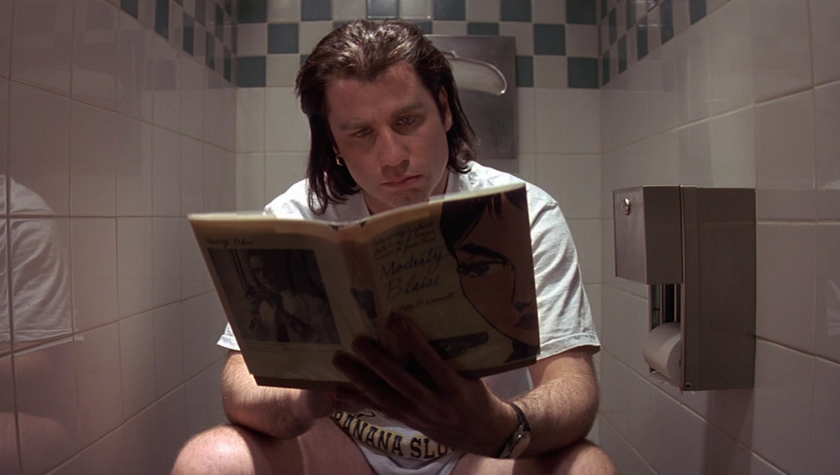How To Keep Your Protagonists in Peril
January 10, 2023
If you’re writing an action, thriller or horror script, it’s important to have your protagonists in constant peril. These genres rely heavily on audiences watching to see how a character survives or overcomes a perilous situation; more often than not, they involve life or death stakes. But how does a screenwriter accomplish this without stretching credibility or getting redundant? How do you keep your protagonists in peril without killing them?
Obviously in a horror film — especially if it’s a slasher —many of the characters don’t survive. However, there’s often a protagonist who does (e.g., the Final Girl). This character, like in an actor or thriller, has to have several “near misses” throughout the story or, at very least, has to have a pronounced threat looming over them (e.g., Laurie Strode in the original Halloween and its numerous sequels). In a horror or thriller in which the protagonist is being stalked by a malevolent force — whether it’s supernatural or human — a slow but sure escalation of the threat is essential.
Every time the threat appears in the story, it has to be closer and more evasive than it was previously. Think of the phrase “tightening the noose” when imagining the threat’s relationship to the protagonist. Even though the original Halloween is probably too much of a slow burn for some audiences today, the basic principles of the film still apply. If you watch the film, you’ll see how Michael Myers is progressively closing in on Laurie Strode: he’s arriving in the town of Haddonfield; he’s stalking Laurie and her friends around her neighborhood; he’s killing her friends in the house across the street; and finally, he’s pursuing and attacking her in the house where she’s babysitting.
Even in a film like Jaws in which the protagonist is safely on land for the first half of the story, there’s an escalation in terms of the shark attacks. Not only do they become more graphically violent and we get increased glimpses of the shark, the threat is increasingly encroaching upon Martin Brody’s life: the first attack is isolated and at night; the second attack is on a busy day at the beach in which Martin is present; the third victim is a fisherman he knows, whose body he discovers with Hooper; the fourth victim is someone who is killed inches away from Martin’s son and the boy has a near miss with the shark himself, leading him to be in a state of shock and hospitalized.
After these increasingly evasive attacks, Martin has to go out to sea to face down the shark, in which the escalation further increases and intensifies: Martin’s the first to see the shark; the crew of the Orca begin a cat and mouse pursuit of the shark; the shark starts pursuing them; the shark causes the Orca to start sinking; the shark kills a major character right in front of Martin's eyes; and in the film’s climatic moments, Martin is in a life-or-death struggle with the shark. If you examine the sequence of events, you’ll see how the threat slowly but surely brings Martin Brody from the comfort and safety of his home to the sinking Orca facing down the film’s threat. This basic narrative structure was likewise used in Alien, Terminator, and pretty much any film you can think of in which a protagonist goes from a commonplace scenario to a highly perilous one.
Even during quieter moments, the threat needs to be looming over the protagonist. Take note of how Laurie Strode looking at the house across the street mirrors Martin Brody staring out at the ocean; both create a foreboding mood and sense of inevitably: the protagonist will be facing this threat directly at some point. Slow burn horror/thrillers still employ these techniques today.
But what about modern suspense films in which the protagonist is thrown into a perilous situation early on and they’re forced to deal with it for the majority of the story? In many ways, these films are simply the third act of a classic suspense film but stretched out for the entire narrative. Modern survival horror films like The Shallows and 47 Meters Down take this approach and have been quite successful. But how did the writers sustain and increase the threat without killing off their protagonist or becoming too redundant?
Once again, a combination of escalation and inevitably is key.
In many ways, these films thrive on putting off the inevitable. Whether the protagonist is stuck in a shark cage, on a rock, or even on a stalled Jet Ski, at some point they’re going to have to be in the water and try to outswim the shark. It’s as inevitable as Martin Brody eventually being in the water with the shark. The audience knows this and the tension and build-up to this eventual showdown is one of the driving engines of these films.
But until this “sink or swim” moment, the protagonist is going to try everything imaginable to find a workaround. These films are largely comprised of failed escapes and false victories. The protagonist attempts to escape with some clever plan, but there’s an unforeseen obstacle and they have to retreat back to the primary location. What these films have in common with suspense films of the past — or even modern-day slow burn thrillers — is escalation. With every failed escape attempt, things are always worse for the protagonist. Whether it’s an injured leg, high tide approaching or running out of air, the noose is tightening and time is running out.
Whenever dealing with suspense, the obstacles and stakes have to increase. Even if the protagonist has retreated to the safety of a “home base”, they have to be in an even worse scenario than they were beforehand. This is what gives a story momentum and it’s especially needed when your script is in a contained environment. The location might not change, but the situation is getting more perilous and the stakes are getting higher.
After you put your protagonists in a perilous situation ask yourself: how can they get out of this situation and what can go wrong as they’re trying to get out of it? And then ask yourself: how can the protagonist overcome this additional obstacle they made for themselves? Asking these questions and finding answers for them will help you extend the suspense and threat to your protagonists.
And if they survive at the end, it’ll be a well-earned victory.
Because you really put them through the ringer.
Written by: Edwin Cannistraci
Edwin Cannistraci is a professional screenwriter. His comedy specs PIERRE PIERRE and O’GUNN both sold with more than one A-list actor and director attached. In addition, he’s successfully pitched feature scripts, TV pilots and has landed various assignment jobs for Universal, Warner Bros, Paramount and Disney.- Topics:
- Screenwriting & Craft




